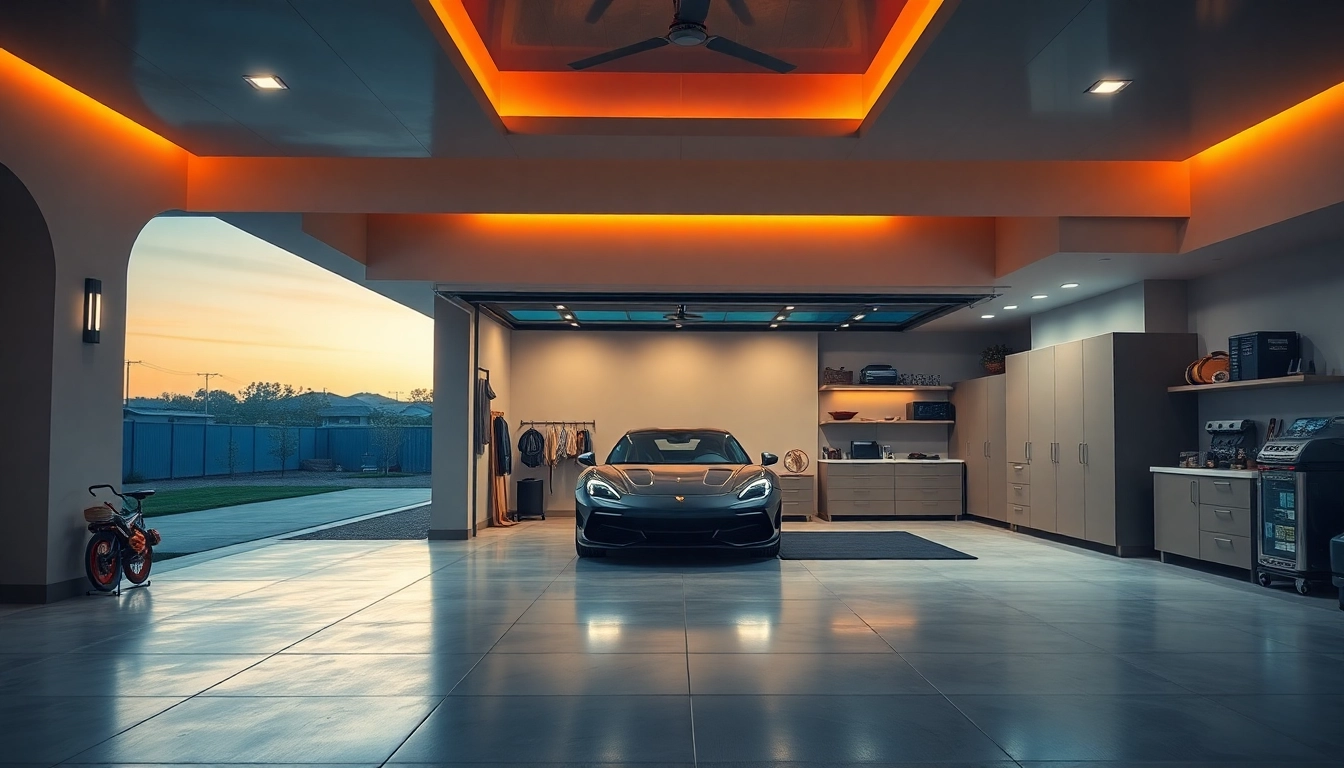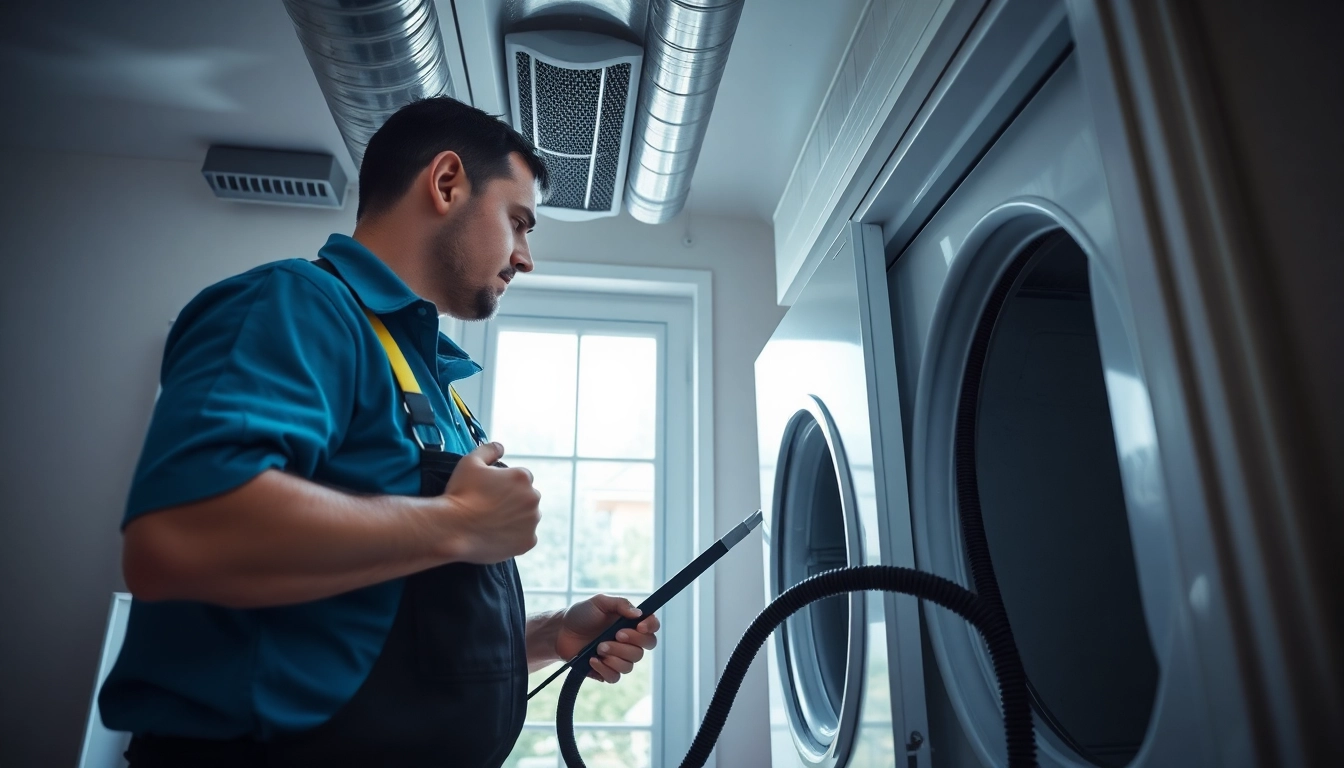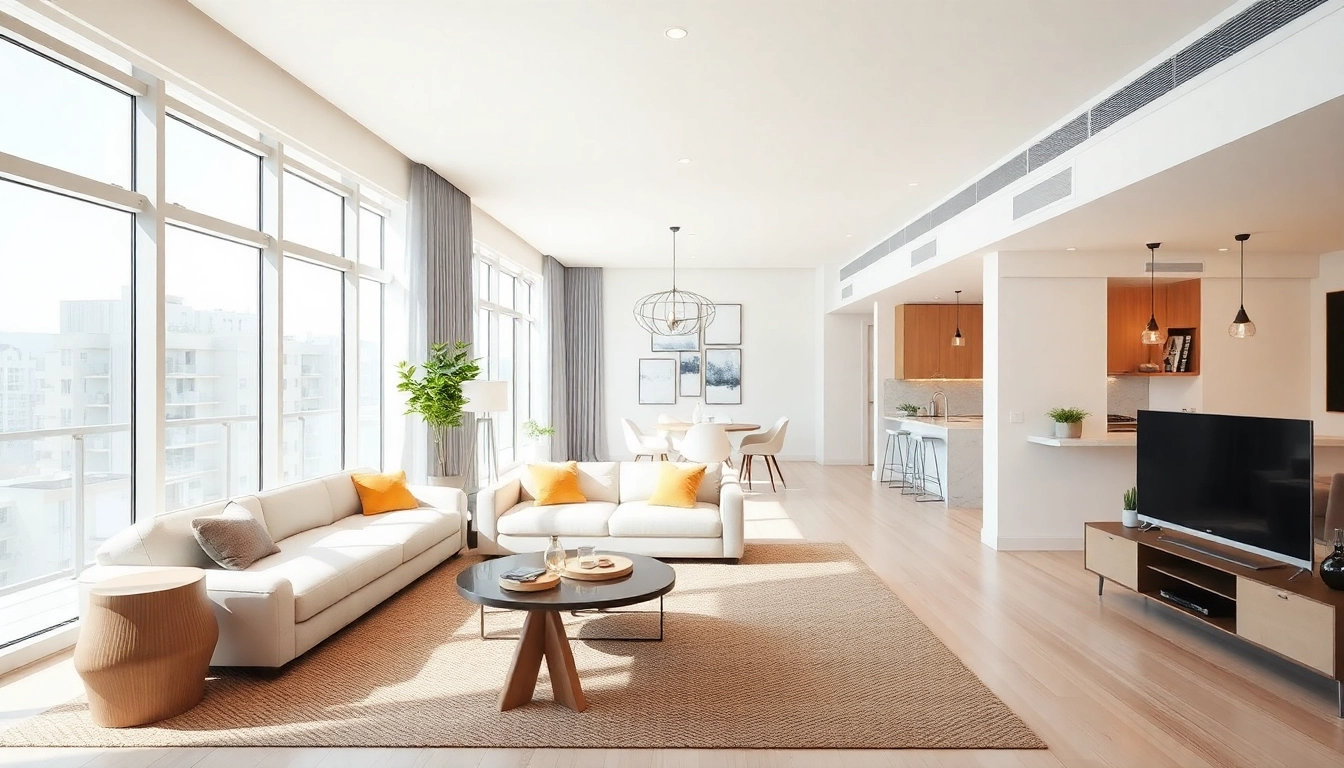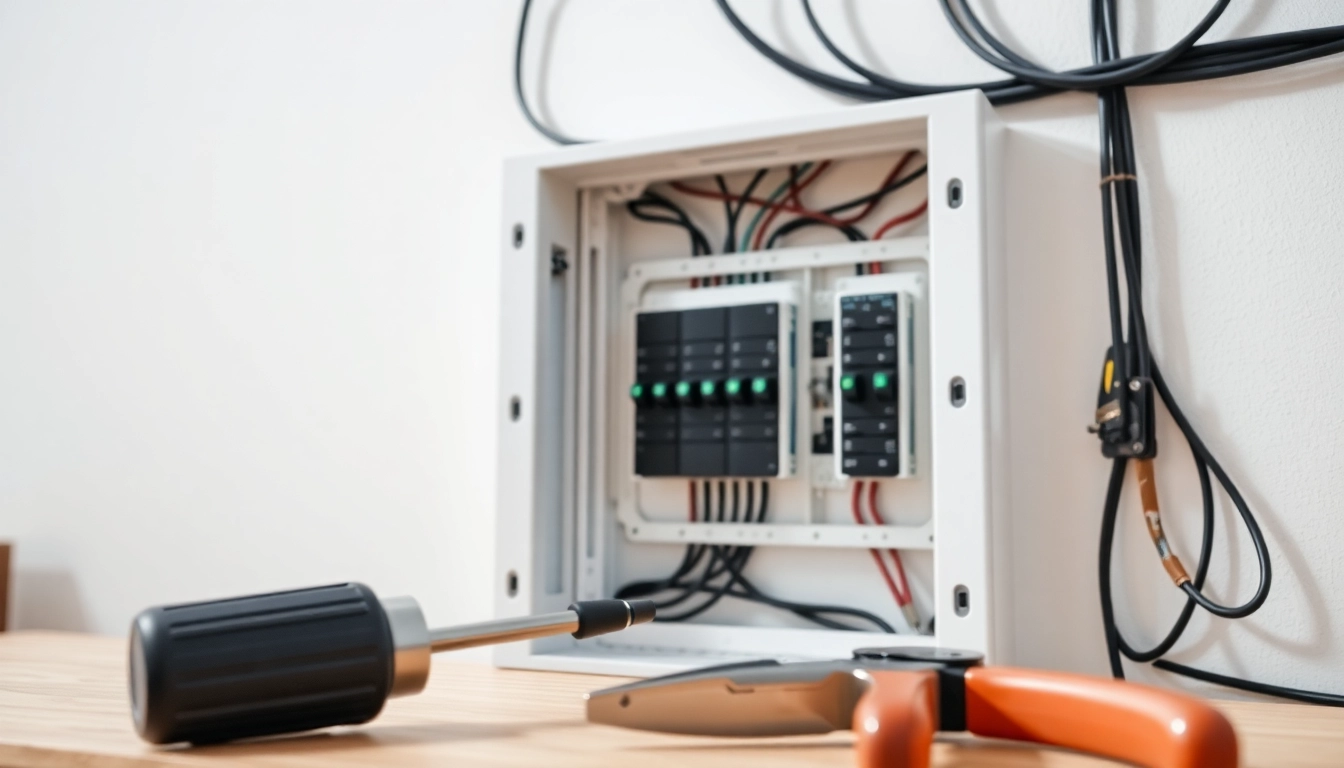Understanding Custom Garages
What Are Custom Garages?
Custom garages are tailored structures designed to meet specific needs and preferences, providing far more than mere shelter for vehicles. While standard garages offer basic functionality, custom options allow homeowners to integrate unique features such as added storage, workshops, or recreational areas. The essence of a custom garage lies in its capacity to reflect the homeowner’s lifestyle, provide functionality, and enhance the property’s aesthetic appeal. Whether you seek a compact build for a single car or a sprawling space to accommodate multiple vehicles alongside your hobbies, a custom garage can be designed to fit those requirements perfectly.
Benefits of Custom Garages Over Standard Options
Choosing a custom garage comes with a multitude of advantages that cannot be matched by standard designs:
- Personalization: Owners can select the layout, style, and features that align with their needs. Whether it’s a workspace for car repairs or additional storage for tools, the options are boundless.
- Increased Property Value: Custom garages can significantly boost the overall value of a property, appealing to future buyers looking for unique and functional spaces.
- Enhanced Functionality: Custom designs allow for improved functionality, incorporating amenities such as built-in shelving, advanced lighting, and specialized flooring that enhance usability.
- Quality of Construction: Custom garages typically utilize higher-quality materials and craftsmanship, ensuring durability and longevity compared to pre-fabricated options.
- Space Optimization: Custom garages can be designed to utilize the available space more efficiently, ensuring that every inch serves a purpose.
Key Factors to Consider When Designing
When embarking on a custom garage project, there are several pivotal factors to consider:
- Location: The site where the garage will be placed can influence the design, including zoning regulations and land topography.
- Size: Determining the appropriate dimensions requires assessing current and future vehicle needs, along with any additional usage such as storage or workspace.
- Style: The architectural style of the garage should complement the existing home design. This includes roof style, siding materials, and color.
- Budget: Setting a budget early in the process will guide selections on materials, size, and features.
- Permits and Regulations: Check with local authorities regarding required permits or regulations that may impact the construction process.
Designing Your Custom Garage
Choosing the Right Style and Features
Designing a custom garage begins with selecting a style that suits both functional needs and aesthetic preferences. Popular styles include:
- Traditional: Features classic design elements, often incorporating wood and gable roofs.
- Modern: Sleek lines and minimalist features characterize this style, often using steel and concrete.
- Farmhouse: A rustic charm with wide overhangs and often painted wood siding.
When choosing features, think about:
- Door Types: Options include roll-up doors for space efficiency or carriage house doors for a classic look.
- Windows: Adding windows for natural lighting and visual appeal can transform a space, and specialized windows can enhance the garage’s energy efficiency.
- Insulation: For those planning to utilize the garage for more than just parking, insulated walls and ceilings can provide comfort year-round.
- Storage Solutions: Think about built-in cabinets or overhead racks to maximize space utilization and organization.
- Wood: Offers flexibility in design and authentic aesthetics, but requires regular maintenance.
- Steel: Durable and low maintenance, steel is often preferred for modern designs and can offer superior security.
- Concrete: Ideal for long-lasting durability; it can be used for flooring as well as structural walls.
- Vehicle Placement: Ensure sufficient space to easily park and exit vehicles. Standard plans should allow 24 feet of depth for a double car garage.
- Utilizing Vertical Space: Incorporate high shelving or overhead storage to capitalize on unused vertical space.
- Designated Areas: Create specific sections for vehicle parking, storage, and workshops to streamline usability.
- Flow of Movement: Plan pathways to ensure smooth movement throughout the garage, allowing easy access to tools or storage.
- Single Car Garage: Between $10,000 and $20,000.
- Two-Car Garage: Ranges from $20,000 to $35,000.
- Three-Car Garage: Typically costs $30,000 to $60,000.
- Electrical Work: Installing lights, outlets, and possibly heating can range from $1,000 to $4,000 based on your selected features.
- Flooring: Choosing higher-end flooring solutions, like epoxy, can start from $2 to $3 per square foot, adding to the overall cost but providing durability and aesthetics.
- Customization: Special features, such as custom cabinetry or built-in workbenches, can add significantly to the cost but enhance functionality.
- Plan Ahead: The more detailed your initial plans, the less likely changes will incur additional costs during construction.
- Compare Contractors: Gather multiple estimates and evaluate which contractor offers the best value versus cost.
- Consider DIY Elements: If you’re handy, taking on smaller elements, such as painting or landscaping, can reduce labor costs.
- Choose Cost-effective Materials: Research materials that deliver adequate performance without breaking the bank; for instance, opting for a steel frame instead of traditional wood may save on long-term maintenance.
- What experience do you have with custom garage builds?
- Can you provide references from past clients?
- Are you licensed and insured?
- What is your estimated timeline for project completion?
- How do you handle permits and inspections?
- Portfolios: Look for a variety of completed projects that showcase their flexibility and design capabilities.
- Online Reviews: Websites like Yelp, Google Reviews, and Angie’s List can provide insight into customer satisfaction and areas of concern.
- Case Studies: Ask the contractor for detailed case studies demonstrating their problem-solving abilities in complex projects.
- Check local zoning laws to ensure your plans comply.
- Inquire if a building permit is required and who is responsible for obtaining it.
- Consider homeowners’ association (HOA) regulations if applicable.
- Regular Inspections: Examine roofing, walls, and foundation periodically for any signs of wear or damage.
- Cleaning: Keep the garage floor and surfaces free from debris to prevent stains, and sweep it regularly to maintain a tidy space.
- Service HVAC Systems: If your garage has heating or cooling units, schedule routine maintenance for efficiency and longevity.
- Flooring Upgrades: Changing from a basic concrete floor to resilient options like epoxy or interlocking tiles can improve both appearance and safety.
- Smart Technology: Integrating smart home technologies, such as lighting or temperature controls, can modernize your garage and increase convenience.
- Durability: Select high-quality materials that withstand the elements and wear over time.
- Warranties and Guarantees: Seek builders that offer warranties on materials and craftsmanship for added security.
- Regular Upkeep: Invest in annual maintenance to catch small issues before they escalate to major problems.
Materials and Construction Methods
Choosing the right materials is crucial for the durability and appearance of your custom garage. Common material choices include:
Construction methods can greatly affect both cost and time. Traditional stick-building techniques provide flexibility in design but may take longer than prefabricated options, which offer quick assembly and decreased labor costs.
Maximizing Space with Smart Layouts
Efficient layouts can vastly improve the functionality of your custom garage. Consider these strategies:
Cost Considerations for Custom Garages
Average Price Ranges by Design
The cost of building a custom garage varies greatly depending on a multitude of factors, including size, materials, and complexity of design. On average, prices can range:
This pricing will increase based on additional features such as insulation, premium materials, or complex architectural elements.
Budgeting for Additional Features
When planning your budget, remember to account for additional features that may enhance the value and utility of your garage:
Saving on Your Custom Garage Project
While building a custom garage can be expensive, numerous strategies can help you save:
Finding the Right Builder for Custom Garages
Questions to Ask Potential Contractors
Finding a qualified builder for your custom garage is crucial for ensuring your project runs smoothly. Consider asking these essential questions:
Evaluating Portfolios and Customer Reviews
Reviewing a contractor’s portfolio and customer feedback is vital to assess their capabilities:
Securing Permits and Legal Considerations
Building a custom garage typically requires various permits. It is wise to:
Navigating legal requirements efficiently will save time and avoid potential fines or project delays.
Maintenance and Longevity of Custom Garages
Best Practices for Upkeep
Maintaining a custom garage ensures its longevity and functionality. Here are some fundamental upkeep practices:
Upgrading Existing Garage Features
If you own a custom garage already, consider upgrades that enhance functionality:
Ensuring Longevity Through Quality Materials
The longevity of custom garages greatly depends on the materials chosen. Always prioritize:



